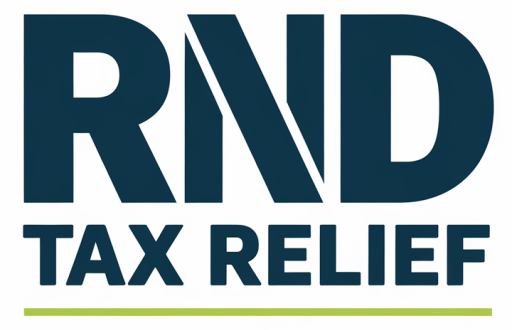What is R&D in Business? A Simple Guide for UK Companies
Research and Development (R&D) in business is all about turning ideas into reality. Whether it’s developing a new product, improving a process, or solving a complex technical problem, R&D helps businesses grow, compete, and innovate.
But what exactly is R&D in business and why does it matter? In this guide, we’ll explain what R&D means, who it applies to, how it can benefit your company, and how to access funding like R&D tax relief.
What Does R&D Mean in Business?
R&D stands for Research and Development. It’s the process of investigating new approaches to improve or create products, services, or systems. It’s often seen in tech and science, but it’s not limited to labs or white coats.
In business terms, R&D means using your resources time, money, and knowledge to find solutions that go beyond everyday improvements. These are projects that involve uncertainty and trial-and-error, often requiring skilled professionals to test new ideas.
Who Can Carry Out R&D?
Many assume R&D is something only large companies do. But that’s far from true. In the UK, thousands of small and medium businesses (SMEs) carry out R&D every year — sometimes without even realising it.
Organisations commonly involved in R&D include:
- Startups and small businesses
- Medium and large enterprises
- Charities and non-profits
- Research institutions
- Engineering and software teams
You don’t need to be in a high-tech industry either. R&D can be found in:
- Construction
- Manufacturing
- Agriculture
- Food and beverage
- Finance
- Renewable energy
- Healthcare and pharmaceuticals
What Are the Benefits of R&D for UK Businesses?
Investing in research and development isn’t just about creating new gadgets. It can transform the way your business operates.
Here are the key benefits of R&D:
- Improved processes and efficiency
- A competitive edge in your market
- Access to new revenue streams
- Greater customer satisfaction
- Long-term profitability
- Eligibility for government funding and tax relief
Companies that invest in R&D often report better staff engagement, stronger branding, and a more future-proof business model.
Common Examples of R&D Projects
R&D takes many forms. Here are some real-world examples to help you identify whether your business is already doing R&D:
- A manufacturer trialling a new composite material that’s lighter and more durable
- A software firm developing a platform that uses AI to automate manual tasks
- A construction company testing new sustainable building techniques
- A food company experimenting with recipes to improve shelf life without preservatives
The key factor? The project must aim to resolve a scientific or technological uncertainty.
How to Know if Your R&D Qualifies for Tax Relief
R&D tax relief is one of the most valuable support schemes for UK businesses — but many miss out simply because they don’t think they qualify.
According to HMRC, you can claim R&D relief if your project:
- Sought to make an advance in science or technology
- Tackled technical uncertainty that wasn’t easily solvable
- Required systematic testing, development, or analysis
- Was not just aesthetic or routine work
This applies even if the project failed or didn’t result in a final product.
R&D Tax Relief: What You Need to Know
R&D tax relief allows businesses to claim back a portion of their R&D spending through tax deductions or cash payments.
HMRC Eligibility Criteria
To qualify, your company must:
- Be registered in the UK and liable for Corporation Tax
- Have carried out qualifying R&D activity
- Provide detailed records and a technical narrative
How Much Can You Claim?
As of the latest HMRC guidelines:
- SMEs can claim up to 21.5% of eligible costs as a cash credit
- Large companies can benefit through the RDEC scheme, worth up to 13%
Claimable costs include:
- Staff wages
- Subcontractor costs
- Software licences
- Materials used in development
- Utility costs during R&D activity
Common Mistakes to Avoid
- Assuming only successful projects qualify
- Failing to document the uncertainty or testing process
- Mixing routine work with true R&D
- Missing claim deadlines
Funding Options for R&D in the UK
Aside from R&D tax credits, UK businesses can access additional support for innovation, including:
- Catapult Centres (industry-specific innovation hubs)
- Innovate UK grants
- Horizon Europe funding
- Knowledge Transfer Partnerships (KTPs)
- Local enterprise partnerships and councils
Each fund has its own criteria, but they all aim to accelerate innovation in UK businesses.
Steps to Make the Most of Your R&D Investment
To maximise your return on R&D:
- Align R&D with business goals
- Track costs and activities carefully
- Hire or train skilled technical staff
- Document every stage of the project
- Consult an R&D tax specialist early
Having the right support can make all the difference in securing funding and maintaining compliance with HMRC.
Why R&D Is More Than Just Science
R&D is about creative problem-solving. It’s how businesses adapt, grow, and stay ahead — especially in uncertain times. Whether you’re in tech, trade, or textiles, if you’re solving tough technical challenges, you could be doing R&D.
And if you are, there’s a good chance you’re leaving money on the table if you’re not claiming tax relief.
Speak to an R&D Tax Relief Specialist Today
Don’t miss out on funding your business may already qualify for. At R&D Tax Relief, we help businesses across the UK maximise their claims with HMRC-compliant reports and expert support.
Book your free consultation now: https://rndtaxrelief.co.uk/contact-us/
What is R&D in Business? A Simple Guide for UK Companies
Research and Development (R&D) in business is all about turning ideas into reality. Whether it’s developing a new product, improving a process, or solving a complex technical problem, R&D helps businesses grow, compete, and innovate.
But what exactly is R&D in business — and why does it matter? In this guide, we’ll explain what R&D means, who it applies to, how it can benefit your company, and how to access funding like R&D tax relief.
What Does R&D Mean in Business?
R&D stands for Research and Development. It’s the process of investigating new approaches to improve or create products, services, or systems. It’s often seen in tech and science, but it’s not limited to labs or white coats.
In business terms, R&D means using your resources — time, money, and knowledge — to find solutions that go beyond everyday improvements. These are projects that involve uncertainty and trial-and-error, often requiring skilled professionals to test new ideas.
Who Can Carry Out R&D?
Many assume R&D is something only large companies do. But that’s far from true. In the UK, thousands of small and medium businesses (SMEs) carry out R&D every year — sometimes without even realising it.
Organisations commonly involved in R&D include:
- Startups and small businesses
- Medium and large enterprises
- Charities and non-profits
- Research institutions
- Engineering and software teams
You don’t need to be in a high-tech industry either. R&D can be found in:
- Construction
- Manufacturing
- Agriculture
- Food and beverage
- Finance
- Renewable energy
- Healthcare and pharmaceuticals
What Are the Benefits of R&D for UK Businesses?
Investing in research and development isn’t just about creating new gadgets. It can transform the way your business operates.
Here are the key benefits of R&D:
- Improved processes and efficiency
- A competitive edge in your market
- Access to new revenue streams
- Greater customer satisfaction
- Long-term profitability
- Eligibility for government funding and tax relief
Companies that invest in R&D often report better staff engagement, stronger branding, and a more future-proof business model.
Common Examples of R&D Projects
R&D takes many forms. Here are some real-world examples to help you identify whether your business is already doing R&D:
- A manufacturer trialling a new composite material that’s lighter and more durable
- A software firm developing a platform that uses AI to automate manual tasks
- A construction company testing new sustainable building techniques
- A food company experimenting with recipes to improve shelf life without preservatives
The key factor? The project must aim to resolve a scientific or technological uncertainty.
How to Know if Your R&D Qualifies for Tax Relief
R&D tax relief is one of the most valuable support schemes for UK businesses — but many miss out simply because they don’t think they qualify.
According to HMRC, you can claim R&D relief if your project:
- Sought to make an advance in science or technology
- Tackled technical uncertainty that wasn’t easily solvable
- Required systematic testing, development, or analysis
- Was not just aesthetic or routine work
This applies even if the project failed or didn’t result in a final product.
R&D Tax Relief: What You Need to Know
R&D tax relief allows businesses to claim back a portion of their R&D spending through tax deductions or cash payments.
HMRC Eligibility Criteria
To qualify, your company must:
- Be registered in the UK and liable for Corporation Tax
- Have carried out qualifying R&D activity
- Provide detailed records and a technical narrative
How Much Can You Claim?
As of the latest HMRC guidelines:
- SMEs can claim up to 21.5% of eligible costs as a cash credit
- Large companies can benefit through the RDEC scheme, worth up to 13%
Claimable costs include:
- Staff wages
- Subcontractor costs
- Software licences
- Materials used in development
- Utility costs during R&D activity
Common Mistakes to Avoid
- Assuming only successful projects qualify
- Failing to document the uncertainty or testing process
- Mixing routine work with true R&D
- Missing claim deadlines
Funding Options for R&D in the UK
Aside from R&D tax credits, UK businesses can access additional support for innovation, including:
- Catapult Centres (industry-specific innovation hubs)
- Innovate UK grants
- Horizon Europe funding
- Knowledge Transfer Partnerships (KTPs)
- Local enterprise partnerships and councils
Each fund has its own criteria, but they all aim to accelerate innovation in UK businesses.
Steps to Make the Most of Your R&D Investment
To maximise your return on R&D:
- Align R&D with business goals
- Track costs and activities carefully
- Hire or train skilled technical staff
- Document every stage of the project
- Consult an R&D tax specialist early
Having the right support can make all the difference in securing funding and maintaining compliance with HMRC.
Why R&D Is More Than Just Science
R&D is about creative problem-solving. It’s how businesses adapt, grow, and stay ahead — especially in uncertain times. Whether you’re in tech, trade, or textiles, if you’re solving tough technical challenges, you could be doing R&D.
And if you are, there’s a good chance you’re leaving money on the table if you’re not claiming tax relief.
Speak to an R&D Tax Relief Specialist Today
Don’t miss out on funding your business may already qualify for. At R&D Tax Relief, we help businesses across the UK maximise their claims with HMRC-compliant reports and expert support.
Book your free consultation now: https://rndtaxrelief.co.uk/contact-us/






